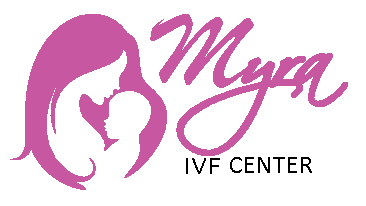Minimal stimulation, also known as ‘Mini IVF,’ is a unique IVF protocol involving low & fewer doses of hormone stimulation injections than the conventional procedure. In Kenya, many couples dealing with infertility face the challenge of low egg reserve. Many women are diagnosed with low egg count during fertility tests, to which in-vitro fertilization (IVF) remains beneficial for winning over infertility.
Only some couples or women are comfortable undergoing IVF treatment due to cost, dosage, post-injection reactions, success rate, etc. Minimal Stimulation or Mini IVF becomes ideal to opt for in such conditions. However, it is advisable to discuss the outcomes of the procedure after you go through the required diagnostic tests.
 Benefits of Minimal Stimulation IVF
Benefits of Minimal Stimulation IVF
- Fewer medication requirements:
Using less medications or injections during the process of mini IVF helps people in adapting the cycle in a better way. The main benefit lies in the reduced chances of potential side effects associated with high doses of fertility drugs and the cost related to the sessions.
- Less invasive:
Generally, patients find IVF an overwhelming procedure while dealing with issues with their fertility. The less involvement of drugs and injectables gave them a space to take a chance with IVF. Also, patients with busy schedules are more in favor of undergoing mini IVF.
- Reduced risk of ovarian hyperstimulation syndrome (OHSS):
With conventional IVF, patients are prepared to experience some potential yet manageable complications, such as pain, bloating, uneasiness, and others. Mini IVF carries a no to minimal risk of OHSS due to less exposure to drugs in the procedure.
- Cost-effective:
It is evident that less engagement in IVF sessions leads to less expense. We ask our patients to be mentally prepared before undergoing any of the IVF procedures.
How Minimal Stimulation IVF is done?
The procedure conducted for minimal stimulation IVF cycle more or less follows a similar process to a conventional IVF. Initially, women are prescribed oral contraceptives rather than injectables to spur ovulation. The patient will begin taking low-dose oral medications.
The ovulation induction phase requires monitoring to confirm that the follicles within the ovaries are maturing into the eggs. Women will undergo ultrasounds sessions until the specialist is satisfied with the results.
In Mini IVF, injections are administered to patients with lower doses than in conventional IVF. Sometimes, follicle-stimulating hormone (FSH) and human chorionic gonadotropin (hCG) are referred as trigger shots before egg retrieval.
Once done, retrieved eggs will be fertilized by the donor’s or husband’s sperm to produce an embryo (in the lab) and transferred to the uterus.
What is the difference between Conventional and Mini IVF?
In conventional IVF, high doses of fertility medications or injections are given to procedure more eggs. But with mini IVF, no pills or injections are used, or low doses are given to produce more than one egg. After mini IVF, one can expect to have 2-7 eggs, while conventional IVF usually has 10-15 eggs that can be retrieved.
Who should consider Minimal Stimulation IVF?
Women considering IVF as infertility treatment can even opt for mini IVF if they aren’t ready for the long-term procedure. Though, the option is limited as it is not advisable for all women. It will be beneficial for the women who:
- Are under the age of 35 years
- Experiencing tubal factor infertility
- Have diminished ovarian reserve
- Concerned about using strong stimulation drugs
- Greater risk of complications from injections used during conventional IVF
- Looking for a cost-effective IVF procedure
- Requiring timely treatment
Disadvantages of Minimal Stimulation IVF
In rare instances, minimal stimulation gives a sure shot results to couples. Multiple mini IVF cycles to achieve a healthy pregnancy further become a financial burden for patients. Another factor that can be considered as a disadvantage is fewer embryos and eggs, which is statistically less successful than conventional IVF.
FAQs ( Frequently Asked Questions)
- How is minimal stimulation IVF different from conventional IVF?
Ans. Using lower doses of fertility drugs, fewer monitoring visits, and fewer eggs retrieved, minimal stimulation involves less involvement. As a result, mini IVF is often less expensive and less invasive than conventional IVF, but it may also have lower success rates.
- Does age matter for minimal stimulation IVF?
Ans. Mostly women crossing their biological clock, including those of advanced maternal age (over 35-40 years), are eligible for minimal stimulation or the conventional IVF method. Age doesn’t play much of a role. Instead, the treatment could benefit women with low ovarian reserves, low egg quality, or who produce fewer eggs.
- What are the success rates for minimal stimulation IVF?
Ans. There isn’t a comparison to what conventional IVF can provide, though mini IVF has shown success for many couples. It depends on factors such as age, overall health, and fertility status.


